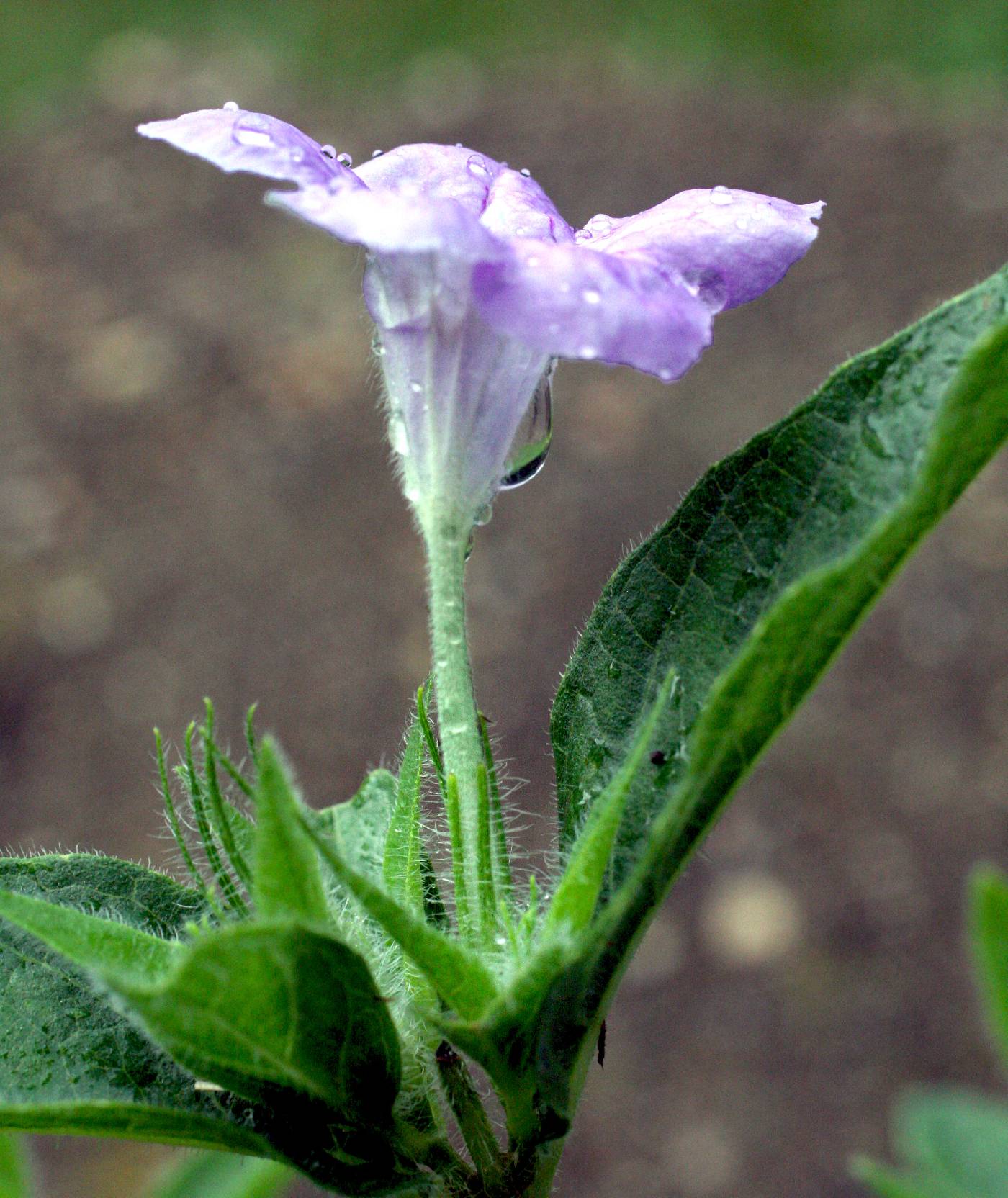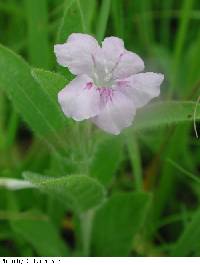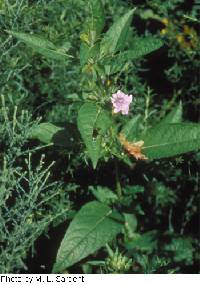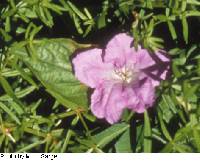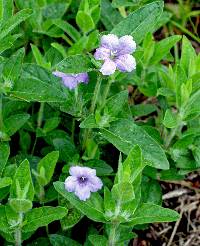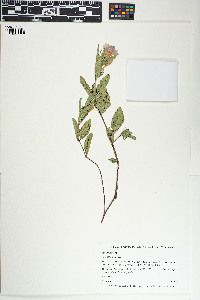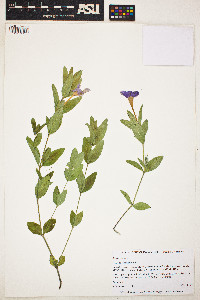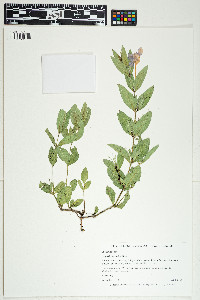Perennial herb 20 - 70 cm tall
Stem: normally branched, and covered with long hairs.
Leaves: opposite, stalkless or very short-stalked (stalk under 3 mm), non-toothed, oblong or egg-shaped, up to 8 cm long, and covered with long, spreading hairs.
Flowers: blue-lavender, radially symmetric, up to 3 cm wide, single, or in crowded clusters in the axils of upper leaves, and subtended by lance-shaped bracts.
Sepals: five, but fused at very base, then separating into erect, up to 2 cm long, at most 1 mm wide, linear, narrowly-pointed lobes with long, bristly hairs along the edges.
Petals: five, but fused into a 3 - 7 cm long tube or funnel, then separating into rounded, spreading, about 1 cm long lobes.
Stamens: four, but the white filaments weakly fused in pairs near the base, and the separate, lilac or tan anthers with two-chambered, parallel, and equally sized sacs. A single sterile stamen (staminodium) often present as well.
Pistil: with a single, two-chambered, superior ovary; a single, white or lilac, 4 - 6 cm long style; and a purple, flattened, two-lobed stigma.
Fruit: an explosively dehiscent, narrow, somewhat flattened, two-chambered capsule, which opens along the outside of each chamber.
Seeds: three to eight per fruit chamber, each with a large number of spiraled threads, which uncoil when wet, and consequently help bury the seed.
Similar species: Ruellia humilis is very similar to R. strepens except that species has stems with only short hairs in narrow strips, leaves on distinct stalks, leaf surfaces with short appressed hairs (if any), and the sepal lobes are at least 2 mm wide, and more lance-shaped. Two other species of Ruellia, R. caroliniensis and R. pedunculata, occur south of the Chicago Region in central or southern Indiana and Illinois. They could be confused with R. humilis due to their linear sepal lobes, but their leaves are normally on stalks at least 3 mm long. The species of Ruellia can be distinguished from members of the Solanaceae family by their opposite leaves. However, the genus Petunia often has falsely opposite leaves in the flowering branches. In this case, they differ from Ruellia by being annuals, having five separate stamens, usually having less distinct petal lobes, and the fruit being a two-valved capsule containing numerous seeds.
Flowering: June to early September
Habitat and ecology: Not particularly common, usually restricted to dry open ground, and prairies or prairie remnants. Like most prairie plants, it is adapted to periodic fire and disturbance.
Occurence in the Chicago region: native
Notes: There is much variation in the leaf shape, level of hairiness, and flower size within this species. Sometimes these characters have been used to split out different varieties, but these differences are too inconsistent within our area to support any taxonomic separation.
Etymology: Ruellia is named after Jean Ruelle, an early French herbalist (1474-1537). Humilis is the Latin word for lowly or humble.
Author: The Field Museum

